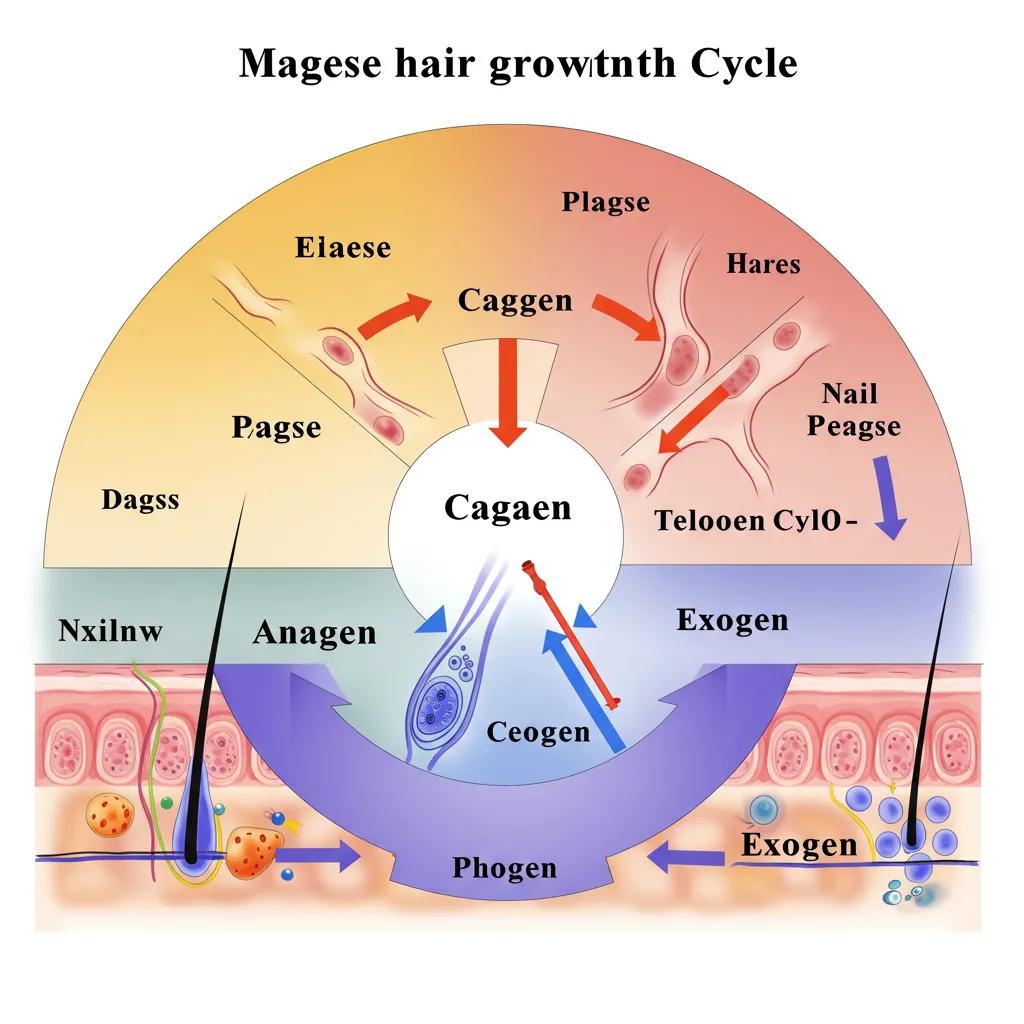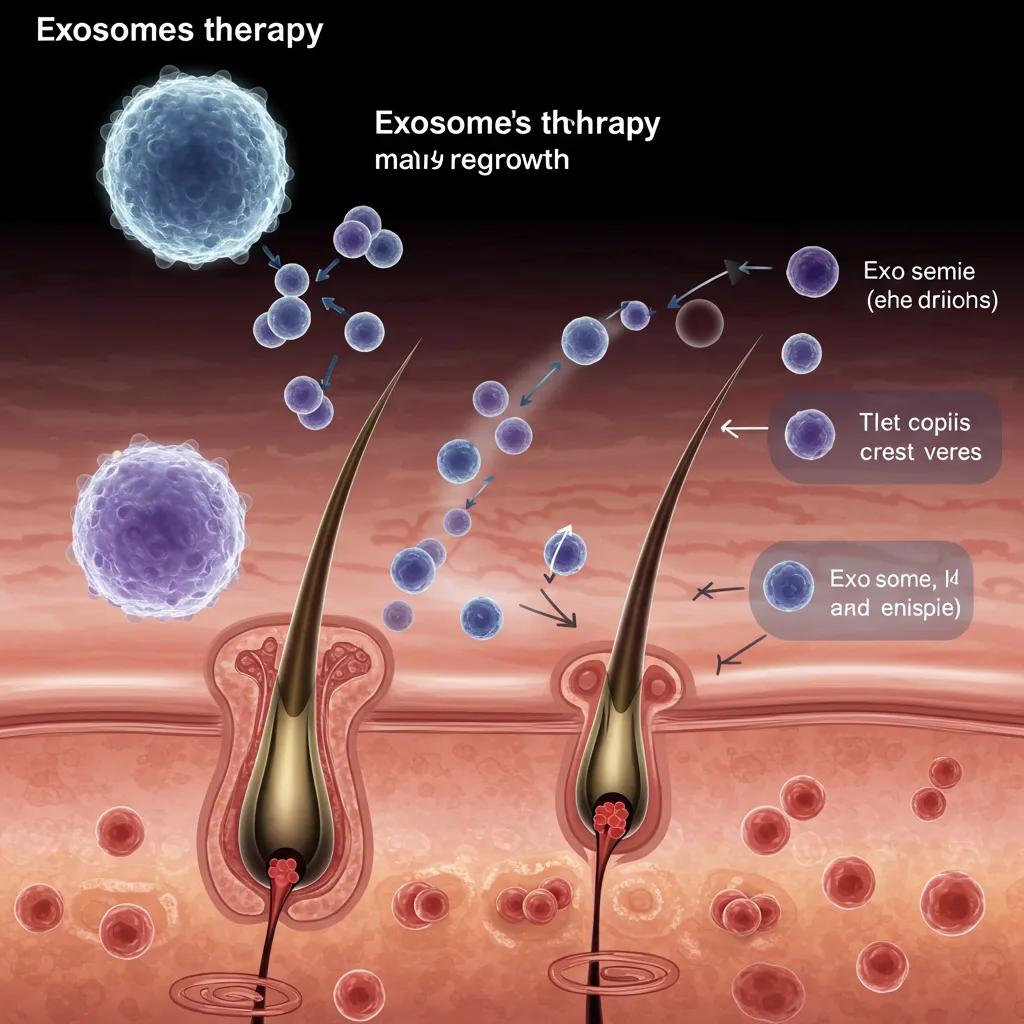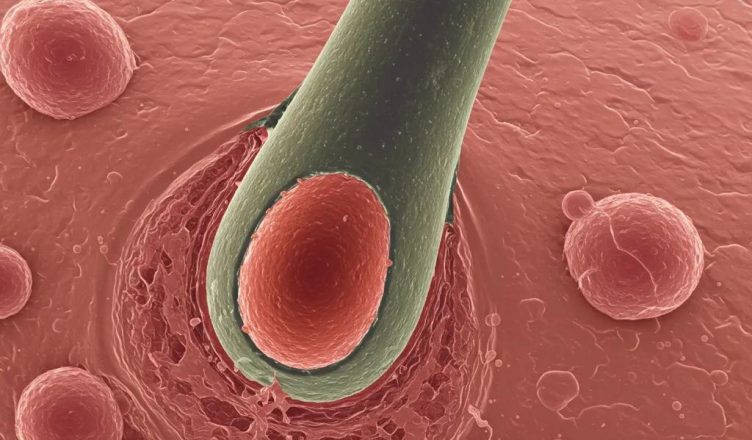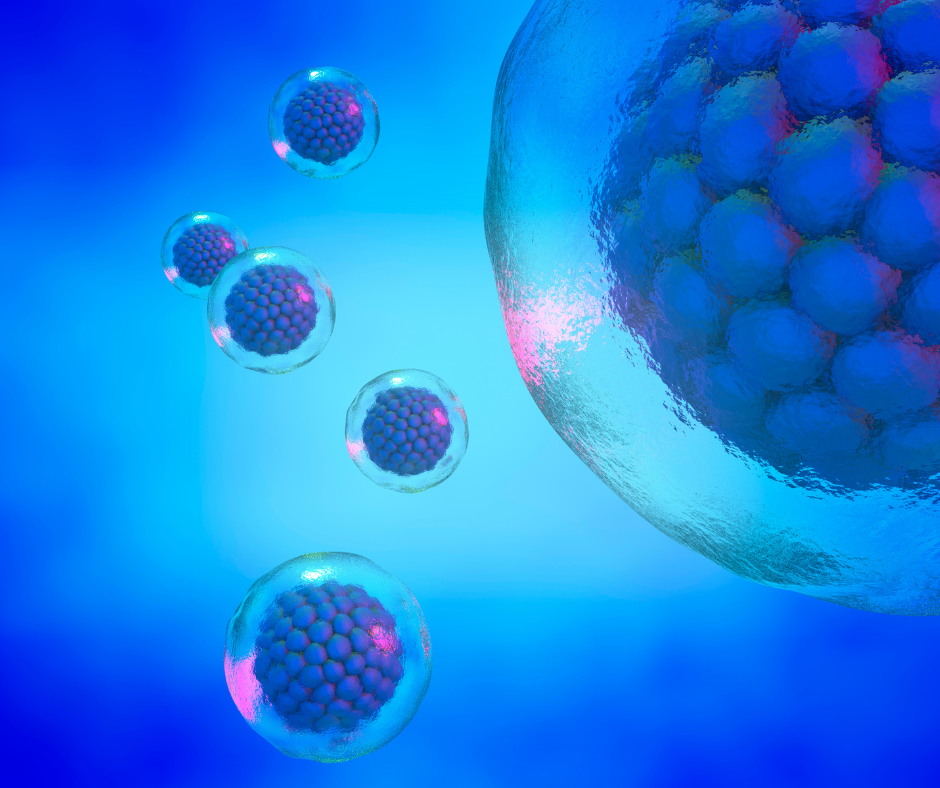The Science of Dormant Follicles: Understanding Hair Follicle Dormancy Mechanisms and Reactivation for Hair Regeneration
Millions confront hair thinning because dormant follicles—hair follicles arrested in the telogen (resting) phase—fail to reenter anagen (growth). Understanding the biology of dormant follicles is essential to unlock new therapies that reactivate hair regeneration. This article delivers a comprehensive roadmap: we define dormant hair follicles and their significance, dissect hair cycle regulation, reveal molecular brakes on hair follicle stem cells, and examine dermal papilla influence. Next, we map key signaling cascades—Wnt/β-catenin, BMP, JAK-Stat, PI3K/AKT—before profiling essential growth factors (FGFs, EGF, VEGF, IGF-1, HGF) and their receptors. We then explore exosome biogenesis, cargo signaling, and therapeutic potential. Finally, we survey stem cell–based therapies, emerging compounds like PP405, non-surgical interventions, niche regulation, and current clinical trials. By weaving these themes into one cohesive guide, readers will gain actionable insights to stimulate dormant follicles and pave the way for robust hair regrowth.
What Are Dormant Hair Follicles and Why Do They Matter?
Hair follicles become dormant when they enter the telogen phase, halting hair shaft production and causing visible thinning. Dormant follicles retain regenerative capacity in hair follicle stem cells (HFSCs) but require precise signals to resume anagen. Recognizing dormant follicles is vital for targeting hair loss at its biological root and designing interventions that coax follicles back into active growth.
What Defines Hair Follicle Dormancy and the Telogen Phase?
Hair follicle dormancy is characterized by the telogen phase, a quiescent interval lasting several weeks during which the follicle’s lower segment regresses and the dermal papilla disengages. Telogen follicles lack a proliferative matrix and produce minimal keratinocyte activity. This resting state conserves stem cell resources until reactivation signals arrive, ensuring cyclic regeneration under controlled conditions.
Dermal Papilla: A Niche for Hair Follicle Regeneration
The dermal papilla (DP) of the hair follicle is both a chemical and physical niche for epithelial progenitor cells that regenerate the cycling portion of the hair follicle and generate the hair shaft. Here, we review experiments that revealed the importance of the DP in regulating the characteristics of the hair shaft and frequency of hair follicle regeneration. More recent work showed that the size of this niche is dynamic and actively regulated and reduction in DP cell number per follicle is sufficient to cause hair thinning and loss. The formation of the DP during follicle neogenesis provides a context to contemplate the mechanisms that maintain DP size and the potential to exploit these processes for hair preservation or restoration.
The dermal papilla: an instructive niche for epithelial stem and progenitor cells in development and regeneration of the hair follicle, 2014
How Does Hair Follicle Stem Cell Quiescence Maintain Dormancy?
Hair follicle stem cell quiescence is maintained by HFSCs residing in the bulge region, where niche signals suppress proliferation. High levels of BMP ligands and Wnt inhibitors keep HFSCs dormant, preserving genomic integrity. This balance prevents premature activation and coordinates synchronized hair cycles, setting the stage for controlled regeneration when stimulatory cues override inhibitory signals.
What Molecular Brakes Regulate Hair Follicle Stem Cell Activity?
Several molecular brakes enforce HFSC quiescence, including BMP-SMAD signaling, p21^Cip1/Waf1^ cell-cycle inhibitors, and Notch pathway regulators. These factors converge on HFSC transcriptional networks to halt cell-cycle entry. By imposing checkpoints, molecular brakes protect the stem cell reservoir from exhaustion and guard against aberrant proliferation that could deplete dormant follicles.
How Does the Dermal Papilla Influence Dormant Follicle Behavior?
The dermal papilla (DP) at the follicle base serves as a signaling hub that dictates the switch between dormancy and growth. During telogen, DP cells reduce secretion of pro-anagen factors like FGF-7 and Wnt ligands, reinforcing quiescence. When DP reactivates, it upregulates growth-promoting signals that penetrate the bulge niche and drive HFSC proliferation, bridging intermittent rest and regeneration phases.
How Is the Hair Growth Cycle Regulated in Dormant Follicles?
The hair growth cycle comprises four sequential phases—anagen (growth), catagen (regression), telogen (rest), and exogen (shedding)—that determine follicle behavior and hair output. Precise regulation of these stages ensures follicle longevity and coordinated scalp coverage. Disruption at any juncture can extend dormancy and cause thinning, highlighting the need to understand underlying control mechanisms.
What Are the Key Phases of the Hair Cycle: Anagen, Catagen, Telogen, and Exogen?

Anagen initiates hair matrix proliferation and shaft formation, lasting months to years. Catagen is a brief apoptotic regression phase that dismantles the lower follicle. Telogen follows as a resting interval, preserving HFSCs in a dormant state. Exogen is the active shedding of the old hair shaft. Each phase hinges on orchestrated signaling and cellular transitions that balance growth and rest.
How Do Signaling Pathways Control Hair Follicle Activation and Dormancy?
Signaling pathways interweave to either maintain HFSC quiescence or trigger anagen. BMP and TGF-β family members enforce dormancy through SMAD-mediated repression. Conversely, Wnt/β-catenin and PI3K/AKT pathways activate proliferation. JAK-Stat signaling responds to inflammatory or hormonal cues, modulating niche dynamics. The interplay of these networks underlies follicle cycling fidelity.
What Role Does the Wnt/β-catenin Pathway Play in Hair Follicle Reactivation?
Wnt/β-catenin signaling acts as the master switch for anagen entry by stabilizing β-catenin in HFSCs and upregulating transcription factors like LEF1. Active β-catenin promotes HFSC proliferation and hair germ formation. Elevating Wnt ligand availability or blocking Wnt inhibitors accelerates dormant follicle reawakening, making this pathway a prime target for hair-regeneration therapies.
How Do BMP and JAK-Stat Pathways Contribute to Hair Follicle Quiescence?
Bone morphogenetic proteins (BMP2, BMP4) signal through SMADs to maintain HFSC dormancy by repressing proliferation genes. JAK-Stat signaling, triggered by cytokines like IL-6, can either reinforce quiescence under stress or promote exit from telogen when balanced with Wnt inputs. Together, BMP and JAK-Stat define a molecular brake system that safeguards HFSCs until regenerative cues surpass inhibitory thresholds.
Which Growth Factors Are Essential for Hair Regeneration and Dormant Follicle Activation?
Growth factors are protein mediators that bind to specific receptors on follicle cells to initiate proliferation, differentiation, and angiogenesis. Their orchestrated release by dermal papilla and surrounding fibroblasts transforms dormant follicles into active growth units. Understanding each factor’s mechanism reveals opportunities to amplify regenerative signals in telogen follicles.
How Do Fibroblast Growth Factors (FGFs) Stimulate Hair Growth?
Fibroblast Growth Factors—particularly FGF-1, FGF-2, FGF-7 (keratinocyte growth factor), and FGF-10—bind FGFR2IIIb on keratinocytes and DP fibroblasts. These interactions trigger MAPK/ERK and PI3K/AKT cascades, promoting HFSC proliferation and matrix cell expansion. FGFs accelerate anagen onset, increase hair shaft thickness, and enhance dermal microvascular support for active follicles.
What Is the Dual Role of Epidermal Growth Factor (EGF) in Hair Follicle Dynamics?
Epidermal Growth Factor (EGF) engages EGFR on follicular keratinocytes to foster cell proliferation and migration, supporting anagen maintenance. However, excessive EGF signaling can delay follicle entry into catagen, prolonging telogen and paradoxically inhibiting growth. Balancing EGF concentrations is therefore critical to harness its stimulatory benefits without impeding normal cycling.
How Do VEGF, IGF-1, and HGF Support Hair Follicle Regeneration?
Vascular Endothelial Growth Factor (VEGF) enhances angiogenesis around follicles, improving nutrient and oxygen delivery. Insulin-like Growth Factor-1 (IGF-1) drives cell survival and proliferation via PI3K/AKT, while Hepatocyte Growth Factor (HGF) promotes follicle elongation through c-Met activation. Together, these factors create a supportive microenvironment that accelerates anagen and sustains robust hair shaft production.
How Do Growth Factor Receptors and Signal Transduction Pathways Work?
Growth factors bind transmembrane tyrosine-kinase receptors to induce receptor dimerization and autophosphorylation. Activated receptors recruit adaptor proteins that launch downstream signaling modules—MAPK/ERK for proliferation, PI3K/AKT for survival, and STATs for transcriptional control. Signal duration and cross-talk determine whether follicles remain dormant or progress into active hair growth.
Key Growth Factor Functions at a Glance
These growth factors coordinate to shift dormant follicles into proliferation. Next, we examine how exosomes complement these signals.
How Do Exosomes Promote Hair Growth and Reactivate Dormant Follicles?
Exosomes are 30–150 nm extracellular vesicles secreted by DP cells and HFSCs, carrying microRNAs, proteins, and lipids that modulate recipient cell behavior. By delivering regenerative cargo directly to follicles, exosomes bridge intercellular communication and amplify growth signals in dormant units.
What Is Exosome Biogenesis and What Cargo Do They Carry?
Exosome biogenesis begins with endosomal inward budding to form multivesicular bodies, which fuse with the plasma membrane to release exosomes. Cargo includes specific microRNAs (e.g., miR-218, miR-23a), heat-shock proteins, Wnt ligands, and growth factor receptors. This selective packaging ensures that exosomes deliver precise molecular instructions to target cells.
How Do Exosomes Mediate Intercellular Communication in Hair Follicles?
Exosomes traverse the extracellular matrix to fuse with HFSCs or DP fibroblasts, releasing cargo that alters gene expression and signaling. MicroRNAs downregulate inhibitors of anagen, while Wnt-containing exosomes directly activate β-catenin in recipient cells. This targeted messaging realigns dormant follicles toward growth phase commitment.
What Are the Mechanisms and Applications of Exosome Therapy for Hair Loss?

Exosome therapy involves isolating vesicles from mesenchymal stem cells or DP cells and injecting them into the scalp. Clinical and experimental trials report enhanced hair density and thickness, attributed to exosome-mediated delivery of pro-anagen factors and microRNA modulators. Continued research aims to standardize dosages, cargo profiling, and delivery methods for scalable, non-invasive hair restoration.
What Therapeutic Approaches Reactivate Dormant Hair Follicles?
Reactivating dormant follicles requires interventions that override inhibitory signals and supply growth stimuli. Therapies range from cell-based transplantation to topical compounds and device-based modalities that synergize with endogenous signaling networks to awaken telogen follicles.
How Do Stem Cell-Based Therapies Stimulate Hair Follicle Regeneration?
Stem cell–based therapies deliver autologous or allogeneic HFSCs and mesenchymal stem cells into the scalp. These cells secrete a cocktail of growth factors and exosomes, remodel extracellular matrix, and replenish depleted niches. Engraftment of HFSCs into the bulge region can reconstitute dormant follicles and induce sustained anagen reentry.
What Emerging Molecules Like PP405 Show Promise in Hair Regrowth?
PP405 is a small-molecule modulator of metabolic pathways in HFSCs that enhances mitochondrial function and reduces reactive oxygen species. By optimizing stem cell energy metabolism, PP405 promotes HFSC proliferation and anagen induction in preclinical models. Ongoing trials in late 2025 evaluate its efficacy and safety as a non-hormonal topical agent.
How Do Non-Surgical Interventions Such as Microneedling and Laser Therapy Work?
Microneedling creates microinjuries that trigger wound-healing cascades, increasing local growth factor release and opening channels for topical agents. Low-level laser therapy (LLLT) stimulates cytochrome c oxidase in mitochondria, enhancing ATP production and promoting HFSC activation. Combined protocols often yield synergistic improvements in hair density.
Comparative Overview of Reactivation Therapies
These approaches complement growth factor and exosome signaling to comprehensively target dormancy. Next, we explore the HFSC niche itself.
What Are the Molecular and Cellular Mechanisms Behind Hair Follicle Stem Cell Niche Regulation?
The HFSC niche is a specialized microenvironment within the bulge region that preserves stem cells and orchestrates their activation. Molecular crosstalk among niche components fine-tunes the balance between quiescence and proliferation.
Where Is the Hair Follicle Stem Cell Niche Located and What Is Its Structure?
The HFSC niche resides in the bulge, a structurally defined region of the outer root sheath at the hair follicle’s midpoint. It comprises basal keratinocytes, niche fibroblasts, Schwann cells, and extracellular matrix proteins like laminin-511. This anatomical arrangement anchors HFSCs, modulates mechanical cues, and concentrates signaling molecules.
How Do Growth Factors and Signaling Pathways Regulate the Stem Cell Niche?
Within the niche, DP-secreted FGFs, Wnts, and HGF engage receptors on HFSCs to tip the balance toward activation. Concurrently, BMP and Notch ligands from niche fibroblasts enforce quiescence. Dynamic changes in ligand gradients and receptor expression patterns determine whether HFSCs remain dormant or initiate hair germ formation.
How Does the Dermal Papilla Interact with the Stem Cell Niche?
The dermal papilla interfaces with the bulge niche through direct cell–cell contacts and paracrine signaling. DP-derived exosomes deliver Wnt ligands and microRNAs to HFSCs, while integrin-mediated adhesion provides mechanical support. This bidirectional communication synchronizes HFSC proliferation with DP readiness, ensuring a coordinated anagen onset.
How Is Research Advancing Our Understanding of Dormant Follicles and Hair Regeneration?
Ongoing research integrates molecular biology, regenerative medicine, and clinical translation to refine strategies that reverse follicle dormancy. Cutting-edge studies illuminate new targets and optimize existing therapies for broader patient benefit.
What Are the Latest Clinical Trials on Exosome and Growth Factor Therapies?
Recent trials in late 2025 investigate mesenchymal stem cell–derived exosomes for androgenetic alopecia, reporting an average 25% increase in hair density after 12 weeks. Parallel studies evaluate plug-in growth factor concentrates (GFC) delivered via microchanneling, demonstrating accelerated anagen entry and improved hair thickness in over 80% of participants.
How Are New Molecules Like PP405 Changing Hair Loss Treatment Paradigms?
PP405’s ability to modulate HFSC metabolism offers a non-hormonal alternative to current treatments. Early-phase trials highlight its favorable safety profile and measurable increases in hair count. By targeting intrinsic cellular pathways, PP405 exemplifies a shift toward precision-medicine approaches in hair regeneration.
What Are the Challenges and Opportunities in Hair Follicle Dormancy Research?
Challenges include standardizing exosome manufacturing, defining optimal dosing for growth factor therapies, and ensuring long-term safety of stem cell interventions. Opportunities lie in combining multimodal treatments, integrating wearable devices for delivery, and leveraging single-cell sequencing to decode niche heterogeneity for personalized regrowth protocols.
Unlocking the mechanisms of dormant follicles demands a multidisciplinary approach that spans molecular signaling, stem cell biology, and clinical innovation. By mastering the interplay of growth factors, exosomes, niche regulation, and emerging compounds like PP405, researchers and clinicians can forge more effective regrowth strategies. Continued advances in trial design and delivery technologies promise to transform dormant follicles into active hair-producing units. As 2025 draws on, the convergence of biology and bioengineering will redefine what it means to restore hair through targeted follicle reactivation.
Authored By:
Dr. Charles Pereyra
Regenerative Health Expert
Founding Physician at Springs Rejuvenation



